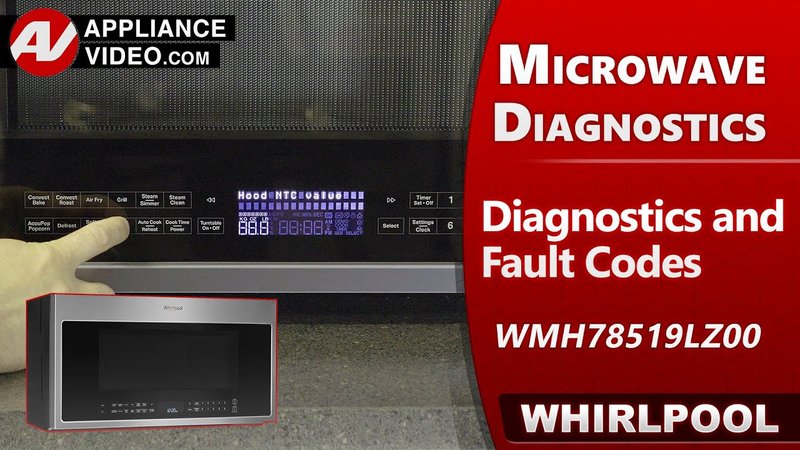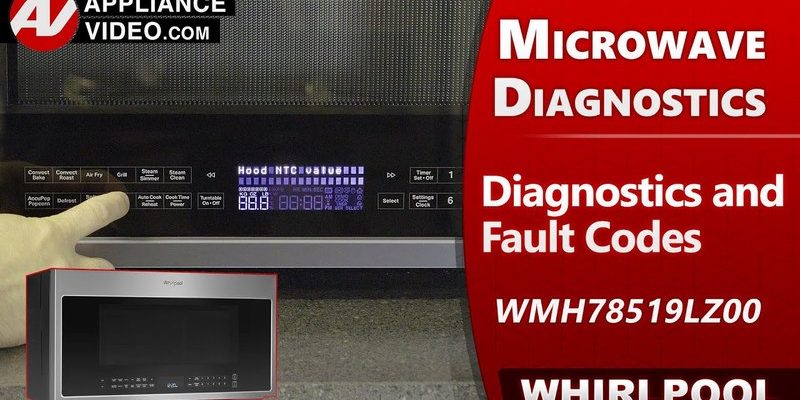
Understanding the OE Error Code
Before deciding to call a technician, it’s important to understand what the OE error code truly signifies. In essence, the OE code usually points to a problem with the microwave’s control board or related electronic circuitry. Imagine the control board as the brain of your microwave. If there’s a hiccup in its functioning, your microwave can act unusually, just like how our behavior changes when we have a headache.
In some cases, the error might be due to a minor glitch, which a simple reset might fix. You can try unplugging the microwave for a few minutes and then plugging it back in. This is akin to rebooting your computer when it freezes. However, if the error code persists or frequently reappears, it’s likely indicative of a deeper issue that requires professional attention.
Additionally, understanding the context in which the OE code appears is crucial. Does it pop up when you’re using specific functions, or is it constant regardless of what you’re doing? These details can offer valuable clues. If you notice that the error occurs only when using certain settings or features, it might help the technician pinpoint the problem more efficiently.
When to Troubleshoot and When to Call a Technician
You may wonder if it’s possible to troubleshoot the OE error on your own. In some cases, yes, you can try a few basic steps before calling a technician. These steps are similar to checking the basic settings on your phone before contacting support. Start by ensuring that the microwave is properly plugged in and that there’s no apparent damage to the power cord.
Another simple step is to verify that the microwave door is securely closed. Sometimes, the sensors detect an incomplete seal, leading to errors. You can also try cleaning the microwave, especially around the door, as accumulated dirt could interfere with sensor functionality. Once you’ve done this and the error code still appears, it might be time to call a technician.
If your microwave is under warranty, reaching out to GE support is a smart move. They could offer repairs or replacements at no extra cost to you. It’s best to avoid tinkering with the microwave’s internal components if you’re unfamiliar with them, as doing so could void your warranty or cause further damage.
Why Professional Help is Sometimes Necessary
Calling a technician for the OE error might feel like admitting defeat, but it’s often the wiser choice, especially if you’re not tech-savvy. These professionals have specialized knowledge and tools that can diagnose and rectify problems without causing additional harm. Think of it like visiting a doctor for a persistent cough instead of relying on internet advice.
The intricacies of microwave electronics mean that there might be underlying issues that aren’t immediately obvious. A technician can perform comprehensive diagnostics and ensure that the control board and sensors are all functioning properly. They can also replace any faulty components with genuine parts, preserving your microwave’s integrity and performance.
Moreover, dealing with electrical components can be dangerous if you’re not properly trained. Safety should always be a priority, and hiring a professional ensures that repairs are done safely and correctly. Thus, while minor troubleshooting can be attempted, calling a technician when the error persists is the safest route.
Preventative Tips to Avoid Future Errors
Wouldn’t it be great if you could prevent such issues from happening in the first place? While not all problems can be avoided, there are several preventative measures you can take to reduce the likelihood of encountering an OE error. Regular maintenance, like cleaning the microwave and checking for any physical damage, can go a long way.
Avoid slamming the microwave door, as this can damage the sensors over time. When using the microwave, ensure that you’re not operating multiple high-power appliances simultaneously, as this could cause power fluctuations affecting the microwave’s electronics. Consider using a surge protector to safeguard against unexpected power spikes.
Lastly, familiarizing yourself with the microwave’s manual and following the manufacturer’s guidelines can significantly extend your appliance’s lifespan. By taking these simple steps, you can enjoy the convenience of your microwave without the hassle of unexpected error codes. If issues do arise, you now know when to try your hand at troubleshooting and when it’s time to call in the experts.
